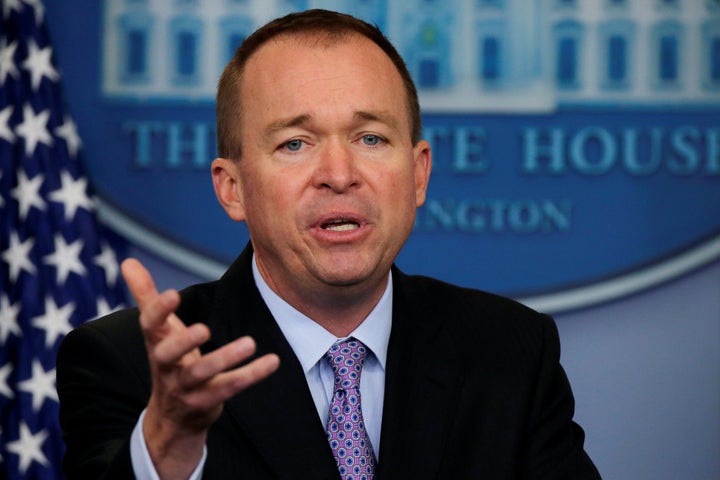The White House made a basic mathematical error when trying to prove that massive tax cuts would pay for themselves and then some, according to a leading economist who advised former President Barack Obama.
In a column in The Washington Post on Tuesday, Lawrence Summers, who directed Obama’s national economic council from 2009 to 2010, took the current White House to task for double-counting $2 trillion in revenue it predicts its tax cuts will generate.
President Donald Trump’s budget proposal assumes that the tax cuts it would enact for wealthy individuals and corporations, as well as its reductions in regulations, will create consistent 3 percent economic growth ― enough to generate $2 trillion a year in additional revenue.
That projection in itself is dubious; tax cuts rarely, if ever, spur enough growth to replenish the revenue they cost the Treasury. But it is nonetheless a prediction consistent with the supply-side economics that Republicans have been peddling for decades.
Where Trump’s budget team really got it wrong is in claiming that the tax cuts would both pay for themselves and close the existing budget deficit.
“This is an elementary double count,” Summers writes. “You can’t use the growth benefits of tax cuts once to justify an optimistic baseline and then again to claim that the tax cuts do not cost revenue. At least you cannot do so in a world of logic.”
New York magazine’s Jonathan Chait shoots down one plausible explanation for the error.
“Trump could be assuming that his tax cuts will not only pay for themselves but generate $2 trillion in higher revenue. But Trump has not claimed his tax cuts will recoup more than 100 percent of their lost revenue, so it’s simply an embarrassing mistake,” he writes.

Mick Mulvaney, director of the White House Office of Management and Budget, defended the apparent mistake in his press conference on Tuesday.
He claimed that any overly rosy assumptions about tax cut-generated revenue are more than offset by conservative estimates elsewhere. For instance, the administration did not account for the ways in which simplifying the tax code could allow the government to collect taxes that normally go unpaid, because people either do not understand their taxes or are too frustrated by their complexity to pay them, according to Mulvaney.
“If you can really fill out your ... tax returns on a single piece of paper, you’re much more likely to actually do it. It’s also easier for us to see if you’re paying the right amount,” he said.
Treasury Secretary Steve Mnuchin was more forthright about the arithmetic error in an interview with CNBC’s John Harwood on Tuesday, emphasizing that the budget is merely a “preliminary document.”
During a House Budget Committee hearing on Capitol Hill on Wednesday, Mulvaney flatly denied that Trump’s budget double-counts $2 trillion in revenue, despite evidence otherwise.
“The dynamic benefit is only counted one time and that’s toward the 3 percent economic growth. And I’m happy to explain that to you further in writing if you like,” he told Rep. Debbie Wasserman Schultz (D-Fla.).
“You can explain whatever you’d like, you are counting revenue twice,” Wasserman Schultz shot back. “And saying that the budget is balanced, and anyone running their household budget would be in serious trouble down the road ― that is where you are taking us.”
This article has been updated with additional comment from Mulvaney.

